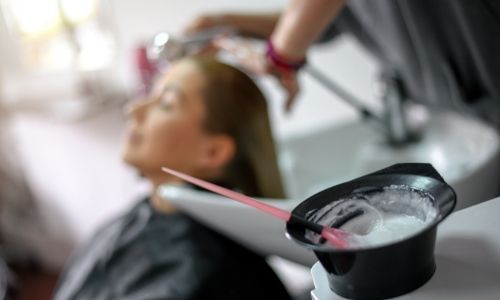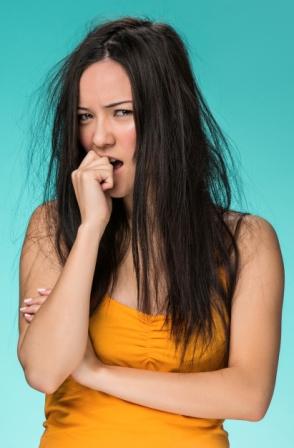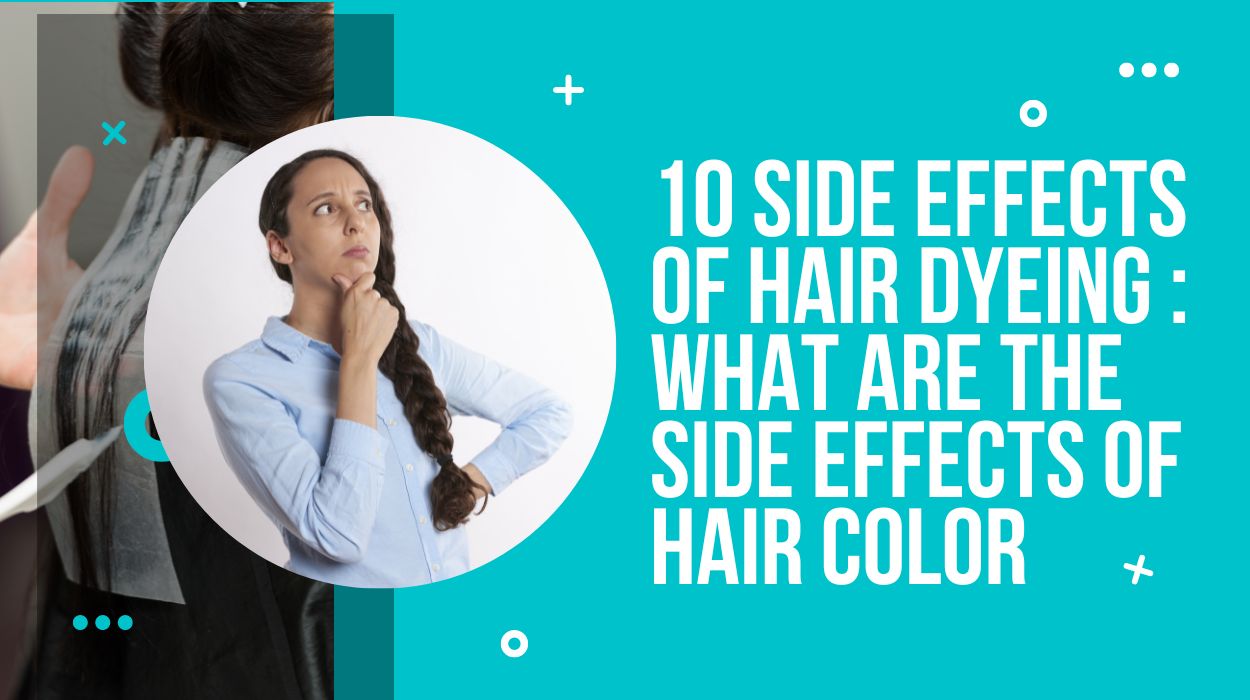How pretty it looks when the turquoise strand of your hair shines against the sunlight! Doesn’t the blonde hair look give you a more sophisticated look? It’s pretty fancy how your hair can be dyed with any color you want, light or dark. Well, dyeing your hair surely adds a new look to your hair and you. But are they always safe? Let’s find out with this article.
Before we get into the different side effects of hair dyeing, let’s understand the type of hair dyes commonly available in the market.
Types of Hair Dyes:

There are many types of hair dyes available in the market. You might be choosing a permanent hair dye or a temporary one, and each one has different constituents. Keep reading to know more!
1. Permanent Hair Dyes
Permanent Hair Dyes are applied to have hair dyes for years. They do not get easily washed off and might stay forever. However, re-dyeing might be necessary every 6-8 weeks. Permanent hair dyes commonly contain ammonia, hydrogen peroxide, and paraphenylenediamine (PPD).
Is ammonia in hair dye harmful?
Ammonia opens up layers of the hair for the dye to enter the hair shaft. Ammonia is also an allergen, causing respiratory and asthmatic problems. Moreover, ammonia also weakens the hair, making it rough.
2. Demi-Permanent Hair Dyes
Demi-permanent hair dyes last lesser than permanent hair dyes. Demi-permanent hair dyes are the ones that do not contain ammonia. They also have lesser amounts of hydrogen peroxide compared to permanent hair dyes. Demi-permanent hair dyes might last for up to 24 hair washes.
Author’s Note: Do not use straighteners on demi-permanent hair dyes.
3. Semi-Permanent Hair Dyes
Semi-permanent hair dyes last much lesser than permanent or demi-permanent hair dyes. Semi-permanent hair dyes may wash out after 4-8 hair washes. Semi-permanent hair dyes do not contain ammonia, hydrogen peroxide, or paraphenylenediamine (PPD). Semi-permanent can only be used to darker the shade of hair. They cannot lighten up the hair shade.
4. Gradual Hair Dyes
Gradual hair dyes are an aqueous metal solution that leaves a darker shade of metals on hair. Gradual Hair Dyes don’t last long. Hence, they have to be reapplied constantly. Re-application of such hair dyes must be done to attain darker hair dyes. Gradual Hair dyes do not contain paraphenylenediamine (PPD).
5. Temporary Hair Dyes
Temporary hair dyes are also known as hair colours. They are made up of compounds with larger-sized particles. Temporary hair dyes last for the shortest time and might wear off even after one wash.
6. Bleach
Bleach is done to lighten the colour of the hair. Hair Bleach contains both ammonia and peroxide. Bleaching is permanent and does not wear off with hair washes.
Now that we have understood the types of hair dyes let’s learn about how they work.
How do Hair Dyes Work?

It is essential to learn how hair dyes work to understand how they affect our hair.
Anatomy of hair:
Hair is made of keratin, a protein. Each hair grows from a hair follicle that lies below the skin’s surface. The portion of hair above the skin’s surface is known as the hair shaft, and the portion below it is the hair root. Each strand of hair consists of 3 layers, the medulla, the cortex, and the cuticle. The medulla is the centre or core of the hair strand, covered by the cortex and cuticle comprising of keratinized cells. The cuticle is the most rigid layer of hair.
Chemistry of hair dyes:
Different types of hair dyes show their effect by different mechanisms.
Permanent hair dyes work by first decolouring the entire hair. Peroxide in the permanent hair dyes does this. Next, ammonia works to open the hair cuticle, allowing the hair dye to enter the cortex and colour the hair.
Demi-permanent hair dyes coat the hair strand with a metal solution and quickly wear off.
Semi-permanent hair dyes only colour the hair’s cuticle and thus are worn off quickly after a few washes.
Temporary hair dyes only deposit the dyes to the outside of the hair shaft. Hence, these dyes might come off even after one wash.
Bleach reacts chemically with melanin, a protein that provides dark colour to the hair, removing the colour of the hair and making it lighter.
After understanding the different types of hair dyes, the chemicals they contain, and how they affect our hair, let’s move on to the side effects that these hair dyes have.
Side Effects of Hair Dyes
Even though hair dyes make your hair beautiful, they come with some potentially dangerous side effects. Let’s see how badly a hair dye can affect us.
1. Hair Loss

Hair dyeing weakens the hair shaft or the protective layer of the hair. Thus, hair dyeing results in easy breakage of hair increasing hair loss. Nonetheless, hair dyes that contain ammonia and hydrogen peroxide weaken the hair. Paraphenylenediamine (PPD) has also been attributed to severe hair breakage and hair loss.
Author’s Note: Lightening of hair causes more damage than darkening. Bleaching the hair to a significantly lighter shade may result in temporary alopecia. Hair dyes containing high amounts of peroxide are potentially dangerous and cause higher hair breakage.
A case study was published in the Hindawi Journal, which reported that a woman lost 90% of her hair after six days of hair dyeing. The dye contained high amounts of paraphenylenediamine (PPD). The woman also showed a high allergic reaction on a patch test with the dye.
2. Hair Dryness

Since ammonia opens up the cuticle, the oil from the hair fails to travel to the scalp, making your scalp dry and itchy. Thus, extensive amounts of hair dyeing can lead to hair dryness. However, using hair conditioners can help decrease the dryness of the hair. Nonetheless, using moisture-rich hair dyes can also help reduce dryness. Deep conditioning or a hair mask once a week might also help.
3. Infertility
Hair dyes contain various chemicals like aminophenol, resorcinol, toluene, phthalates, etc. All these chemicals have been reported to cause infertility. Repetitive application of hair dyes leads to the build-up of these toxic chemicals in the body, affecting the mother or the child. Hence, if you are a woman trying to get pregnant, dyeing your hair might not be a good decision.
Source: https://pubmed.ncbi.nlm.nih.gov/15019177/
4. Allergic Reactions
Hair dyes contain chemicals that might irritate your skin, causing an allergic reaction. You might get itchy skin or a raised, red skin rash. Your eyes, lips, hands and feet might become swollen. You might also feel a swelling in your mouth, throat, or tongue, causing difficulty breathing or swallowing. Some allergic reactions also include nausea, vomiting, stomach pain, and lightheadedness or fainting.
The allergic reaction might develop 2-3 days after dyeing your hair. Paraphenylenediamine (PPD) is the most common allergen in hair dyes. Before you dye your hair, taking a patch test might help you prevent any allergic reaction.
5. Asthma

Asthma might be an allergic reaction caused due to hair dyes. Hence, asthmatic patients are usually warned to use hair dyes. However, some hair dyes contain persulfates which may lead to asthmatic conditions.
6. Eye Infections
Allergic reactions due to hair dyes might lead to the pink colouration of the eye, inflammation, and excessive tearing. In some cases, hair dyes have also led to conjunctivitis. Nonetheless, while applying hair dye, make sure that the hair dye does not come in close contact with your eyes.
7. Hormonal Disbalance
Hair dyes contain resorcinol. The build-up of resorcinol in the body might cause disturbances in the functioning of thyroid glands, leading to hormonal imbalances. A study published in the European Journal of Public Health reported that women using hair dyes had significantly increased testosterone levels in the body.
8. Neurological Disorders
Darker Hair Dyes contain Lead Acetate that might be absorbed into the bloodstream. Lead Acetate in the bloodstream can lead to adverse neurological disorders. While applying hair dyes, make sure that your scalp does not have any cut, or hair dye chemicals might directly enter the bloodstream.
9. Psoriasis
As previously mentioned, hair dyes contain Paraphenylenediamine (PPD), an allergen that might worsen psoriasis in a person. It may cause aggravation of the lesions, and rashes might develop over psoriasis. Hence, people with psoriasis should take precautions while applying hair dyes.
10. Cancer
In an article published by the National Institute of Health, NIH, it was reported that women using hair dyes were more prone to developing breast cancer than those who didn’t. However, various research is still going on to establish a clear link between hair dyeing and cancer.
You May Also Like To Read:
Best Hair Pack For Hair Growth in India
Conclusion:
Hair Dyes have become a fashion statement around the world. However, protecting your hair and health still comes first. Hair Dyes, when used frequently, have chronic side effects on our hair and body, right from hair loss and thinning to even cancer.
Nonetheless, if you still want your hair to be dyed, try opting for natural hair colours like henna, food colourants, coffee, beet juice, and chamomile tea.
Drop a comment and let us know if you have experienced any side effects of hair dyeing.


